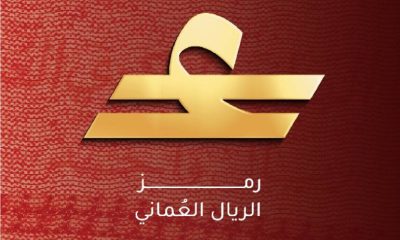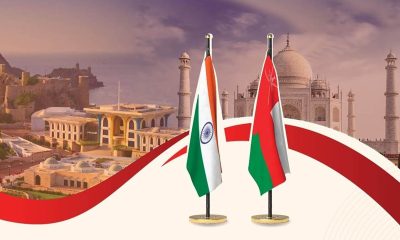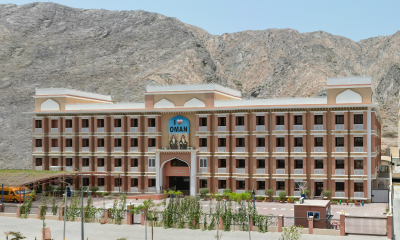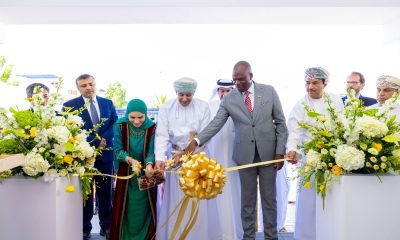Uncategorized
Paying the bills
Oman’s 2015 state budget, which was approved by a royal decree issued on January 2, affirms the government’s commitment to maintain current spending and, in addition, to support ongoing investment in a raft of large-scale capital projects.
Oman’s 2015 state budget, which was approved by a royal decree issued on January 2, affirms the government’s commitment to maintain current spending and, in addition, to support ongoing investment in a raft of large-scale capital projects. In this respect the budget is a continuation of the sultanate’s 2014 spending plan and a sign of continued efforts to bring about long-term economic diversification in support of sustainable growth. These moves have so far been concentrated primarily on expanding and improving various industrial and manufacturing segments, the tourism industry and infrastructure – among many other areas.
“Oman’s steady budget spending indicates the depth in the country’s economy and government finances, and also reinforces Oman’s reputation for economic stability,” Noaman Abdul Majid, the country manager at the Pak Oman Investment Company – a joint venture between the governments of Oman and Pakistan – told local media in early January. “The continued focus on infrastructure and human development will further consolidate foundations for long term economic development,” he added.
At the same time, the rapid decline in the price of oil over the past half-year has given rise to concerns about the viability of long-term spending plans. As of mid-January 2015 Brent crude, the international benchmark, was hovering below $50 per barrel, down more than $60 since June 2014. While the 2015 budget does not name an average expected oil price, in 2014 this figure was $85 per barrel – well above the current price. According to an early 2015 report issued by the US-based professional services firm KPMG’s Oman office, given a constant rate of production the 2015 budget assumes an average oil price of around $80 per barrel – again, well above current prices. Furthermore, oil and gas revenues are expected to account for 79 per cent of total government revenues in 2015. While this projected figure is down slightly from 83 per cent in 2014, declining global oil prices are still widely considered to be a cause for concern in Oman and throughout GCC member states.
According to a mid-January report released by ahlibank, a local financial institution, if oil averages $40-60 per barrel in 2015, Oman’s budget deficit for the year could jump to RO4.3bn-6.8bn, whereas if the price averages $80-100 per barrel the deficit would likely be RO700m-1.8bn. In the 2014 budget Oman planned for a budget deficit of RO1.8bn, and in the 2015 budget the government plans to end the year down RO2.5bn. This deficit will be covered primarily by surpluses from previous years. “The region has had 10 years of abundance, but that decade of plenty is done,” said Simon Williams, HSBC’s chief economist for Eastern Europe and MENA, in Bloomberg News recently.
Despite declining short-term revenues, the government, for its part, appears to be relatively confident about its spending plans for 2015. Oman’s financial reserves are considerable. As of the end of 2014 the country’s two largest sovereign wealth funds, the Oman Investment Fund and the State General Reserve Fund, had total assets of around $19bn, according to data collected by the US-based Sovereign Wealth Fund Institute, which tracks funds around the world. Additionally, the government is currently looking at a variety of other ways it might boost revenues over the course of the year. Options currently under consideration include, levying new taxes or fees, issuing debt of various sorts (including sukuk, or Islamic bonds) and, longer-term, the privatisation of a variety of state-owned enterprises. This follows on from late 2014, when Oman’s Majlis Al Shura (Consultative Assembly) recommended a series of small cuts in oil production and defence spending. “Due to low oil prices, it was necessary to take some temporary measures to maintain financial stability,” Darwish Al Balushi, the Minister for Financial Affairs, told regional media at the time. “These measures will not affect the common people, their living standards or their employment.” Indeed, given the sultanate’s considerable reserves and opportunities for boosting revenue and cutting expenses, the state is broadly optimistic about the future.
Budget Details
The 2015 budget includes revenues of RO11.6bn and expenditure of RO14.1bn, with a resulting deficit of RO2.5bn. Were it not for the recent rapid decline in oil prices, the document would likely be taken as a relatively conservative budget. Oil and gas revenues account for 66 per cent and 13 per cent of total expected revenues for the year, down 6 per cent and 3 per cent from 2014, for example, and state expenditure on the development of civil ministries was cut by 8 per cent from the previous year. The government plans to spend heavily on key social services, such as education and health care. Indeed, the 2015 budget includes RO1.8bn in education expenditure, for example, up 27 per cent from the previous year, and RO684mn on health, up 17 per cent from 2014. Additional expenditure will also go towards social security and welfare (up 17 per cent from the previous year), housing (up 10 per cent) and public services (up 10 per cent).
The state plans to spend heavily in a number of other areas as well. The budget includes a considerable increase in expenditure on oil and gas production (RO3.8bn, up 3 per cent from 2014), for example. According to BP’s 2014 Statistical Review of World Energy, Oman’s hydrocarbons reserves are expected to last through the mid-2030s at current rates of extraction. This figure is low as compared to Saudi Arabia and the UAE- which reportedly hold reserves that will last them through 2080 and 2095, according to data from BP – but still significant.
With this timeline in mind, the state is working to ensure that Oman’s non-oil industries are sustainable for years to come. This effort has thus far included government-led efforts to attract foreign investment and expertise across a number of strategic industries; encouraging and supporting local entrepreneurs and small- and medium-sized enterprises (SMEs); and facilitating the development of high-quality national infrastructure and communications networks, among other key initiatives. The 2015 budget includes expenditure for many of these projects, including a 2244-km national rail project, which is currently in the tendering stage; a raft of major highway development and refurbishment initiatives; and a considerable amount of spending on tourism-related initiatives, including the development of the Oman Convention and Exhibition Centre, which has the potential to play a major role in Oman’s burgeoning tourism industry. In total, non-oil economic growth is expected to reach 5.5 per cent in 2015, according to the budget document, as compared to overall expected growth of 5 per cent. Unless the oil price recovers considerably over the coming 11 months, of course, this last figure will likely come in considerably below this forecast.
Raising Revenues
In the meantime, boosting revenue is widely considered to be a key short- and medium-term priority. The 2015 budget includes revenues of RO1.3bn from taxes and fees, up nearly 29 per cent from RO1bn in 2014. Of this total, income tax is expected to generate some RO500mn in 2015, up significantly (25 per cent) from RO400mn the previous year. Currently all businesses operating in Oman are required to pay a 12 per cent flat rate on taxable income above RO30,000, according to data from Deloitte. Income derived from petroleum sales, meanwhile, is taxed at a provisional rate of 55 per cent. While the government has not formally announced any tax or fee increases, in 2014 there was a debate about raising income tax rates. Any increase in tax revenues in 2015, therefore, is expected to be the result of the government finalising tax assessments for previous years, according to KPMG. Additional revenue is also expected to be generated by the issuance of non-Omani labour licences, which are forecast to rise to RO245mn in 2015 from RO150m in 2014; and an increase in Customs duties over the same period, from RO270mn to RO330mn.
Sukuk are another potential means of generating government revenues over the course of the coming year. The Capital Market Authority (CMA) – the sector’s regulator – legalized sharia-compliant debt instruments in January 2013. Since then a handful of firms have made moves to issue sukuk, including the Tilal Development Company, which issued RO50mn in debt in November 2013; and Meethaq Islamic Bank, Bank Muscat’s sharia-compliant unit, which plans to launch a RO500mn sukuk issuance programme in 2015. The government, meanwhile, had announced that it planned to issue up to RO200mn of sovereign Islamic debt in early 2014. Though this plan was not put into effect, most local analysts agree that sovereign sukuk issuance is still very much on the table for Oman. Given the Sultanate’s ambitious spending plan and falling oil revenues, the state is widely expected to move forward with sukuk issuance before the end of 2015.
In an effort to reduce expenses, Oman has begun to look into privatising state-owned assets. Low oil prices and high spending targets could potentially lead to an acceleration of this programme. In April 2014 the state sold 19 per cent of Omantel – the biggest local telecommunications company – in an initial public offering on the Muscat Securities Market raising some RO240mn. It was also potentially an indicator of the state’s future plans. Indeed, in late 2013 the government announced a plan to partially privatise some 65 state-owned firms, including a number of major public utilities and transport companies. Firms that could potentially be open to private investment in the near future include Oman Air, the state-controlled flag carrier; the Electricity Holding Company, a major public power utility; and a variety of cement firms and other construction materials companies.
-

 Banking & Finance2 weeks ago
Banking & Finance2 weeks agoOman Oil Marketing Company Concludes Its Annual Health, Safety, Environment, and Quality Week, Reaffirming People and Safety as a Top Priority
-

 Economy2 months ago
Economy2 months agoMaal Card: What Oman’s New National Payment Card Means for Everyday Users
-

 News2 months ago
News2 months agoSheikh Suhail Bahwan, Chairman of Suhail Bahwan Group, Passes Away
-

 News1 month ago
News1 month agoOIG Appoints New CEO to Lead Its Next Chapter of Excellence
-

 Economy2 months ago
Economy2 months agoOman Unveils Official Omani Rial Symbol in Landmark Move to Boost Global Currency Presence
-

 News1 month ago
News1 month agoReport: How India & The Middle East Are Exploiting Immense Economic Synergies
-

 Uncategorized1 month ago
Uncategorized1 month agoOman’s ISWK Cambridge Learners Achieve ‘Top in the World’ and National Honours in June 2025 Cambridge Series
-

 Trade1 month ago
Trade1 month agoConsulate Office of the Republic of South Africa opens in Muscat, enhancing bilateral relations




























You must be logged in to post a comment Login